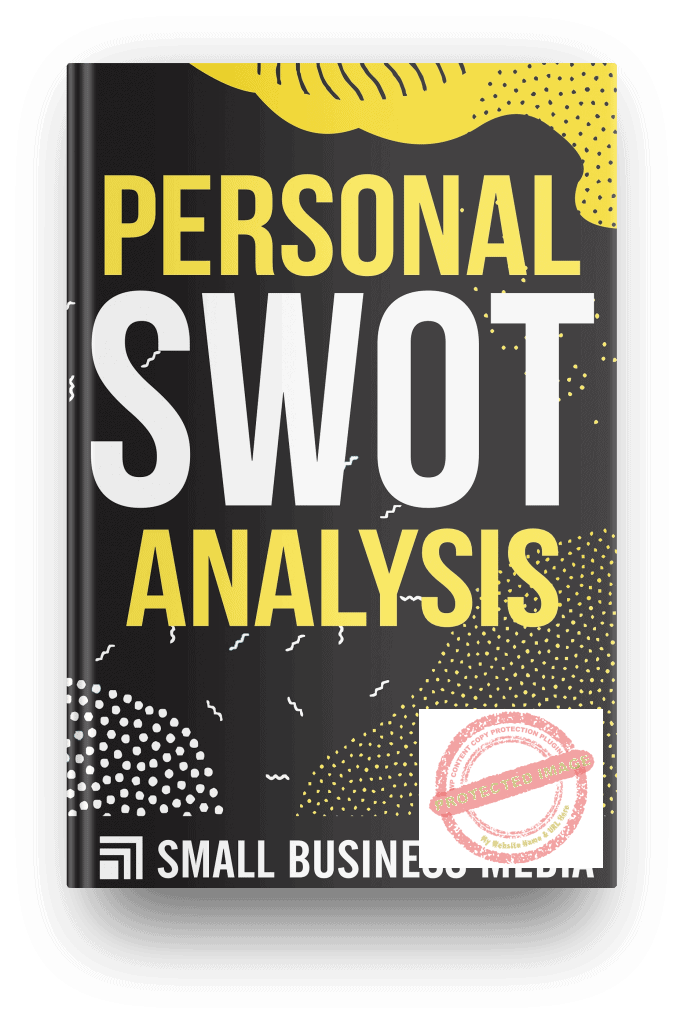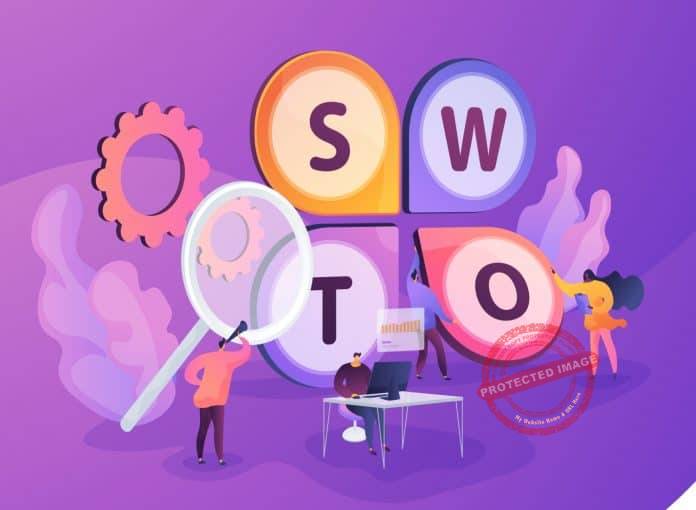Do you often experience downsides and would want to change your approach in pursuing success? Then, what you need is to learn how to carry out a personal SWOT analysis.
Doing so will help you understand your current situation and your potential to step up your game.
SWOT analysis is an effective universal method that can help you unlock your full potential to succeed in life.
It will determine the key information that influences every outcome from you.
Therefore, in this article, you’ll learn more about SWOT analysis, its advantages and setbacks, the importance of internal and external factors, and why you need an analysis.
You’ll also get a template and a step-by-step guide on how to get started and how to complete a personal SWOT analysis.
Personal SWOT Analysis
What Is SWOT Analysis?

SWOT analysis is the brainchild of Stanford Institute’s Albert Humphrey.
It first surfaced in the 1960s to assist as a strategic planning tool and is sometimes called a SWOT matrix.
SWOT analysis is a method that evaluates a person’s strengths, weaknesses, opportunities, and threats.
It encourages you to list down chunks of useful information and then categorizing these chunks according to their use to you.
SWOT analysis of yourself works because it goes beyond a generic analysis.
It capitalizes on the unique components of your life.
It goes in line with the principle that what may work for other people may not work for you.
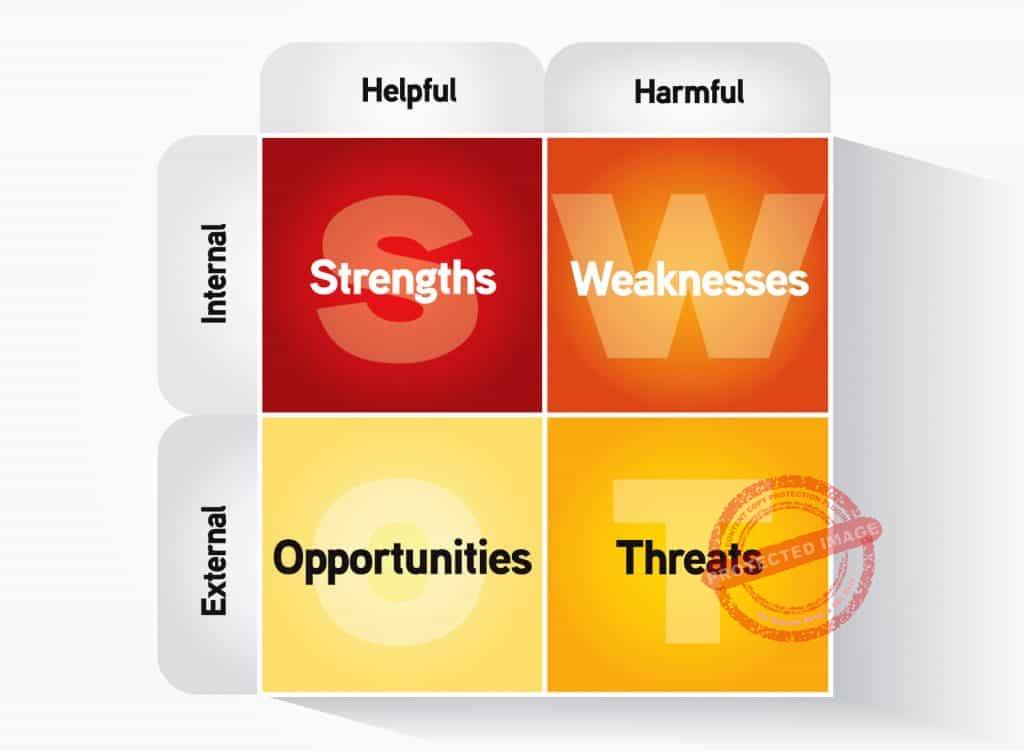
A generic approach might not play well with you because of its strict design.
Apart from not making room for variables, a generic approach’s definition of a forward-thinking approach is fixed.
Rather, a SWOT analysis is flexible and requires input from you.
While it addresses the ineffectiveness of a “one size fits all” approach, it gives importance to personal factors.
To achieve its goal, it identifies the internal and external factors that may affect your performance realistically.
It points out vital information regarding your positive and negative aspects, as well as the obstacles that are derailing your success.
The Importance Of An Internal & External Analysis
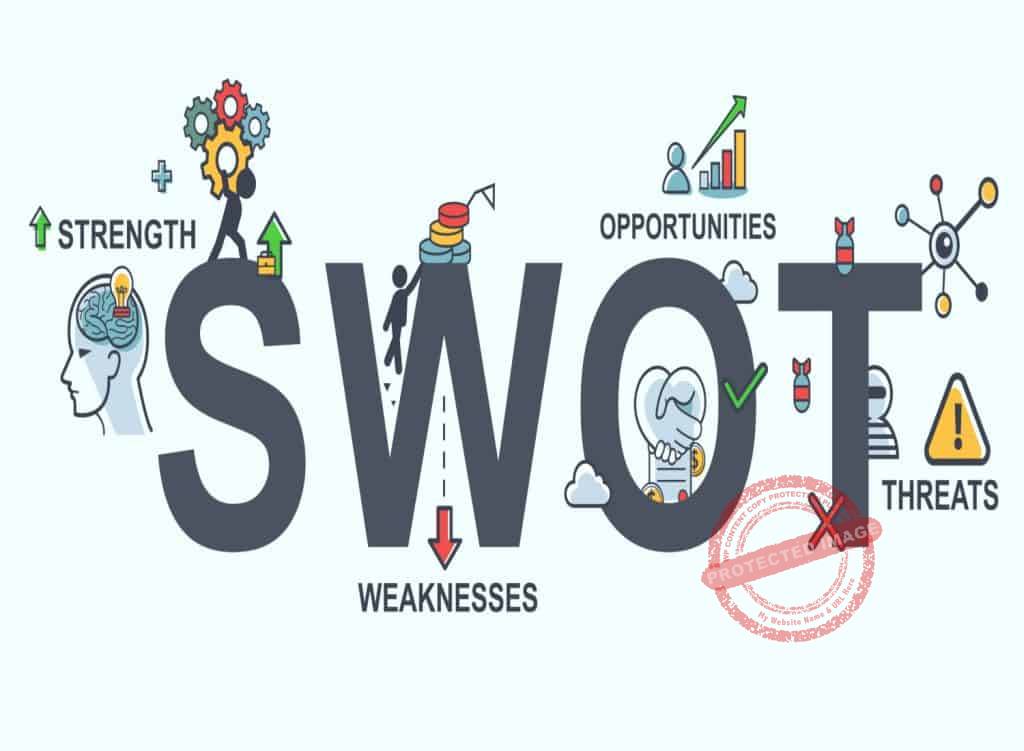
Before learning how to do a personal SWOT analysis, you should know what the word “SWOT” stands for.
The first two letters of SWOT refer to strengths and weaknesses, which are the internal factors in the analysis.
With much-needed work from you, you can change them for the better.
If you think they’re hard to change, just give yourself ample time to work on them.
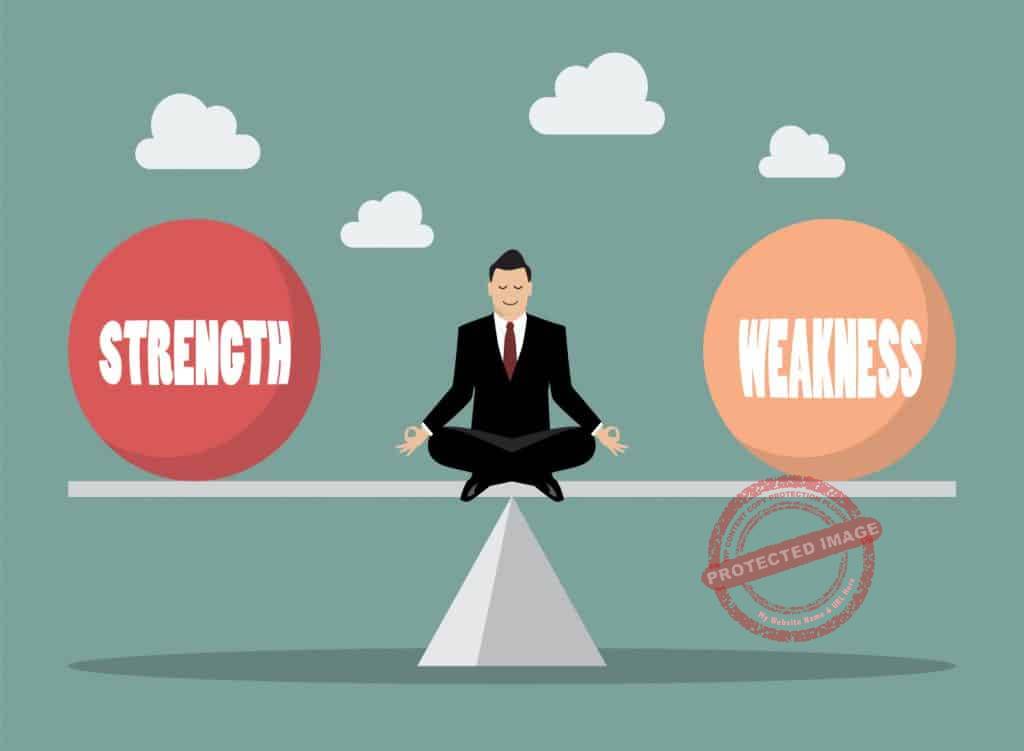
Examples Of Strengths And Weaknesses
- Attitude
- Perception (of yourself)
- Abilities
- Competitive advantage/disadvantage
- Mindset
The goal of these internal factors is to help you understand that you are in control of your path to success.
Along with these details, you simply need a push to start moving in the right direction.
To move in the right and forward direction, be willing to maintain and maybe even hone the areas in your life that are driving you to your destination.
You should also be able to let go of all things in your life that are holding you back.

Identifying these and other internal factors will help you in the following way:
- Inform you of your situation
- Measure your competency
- Measure areas that need improvement
- Inform you of your vulnerability
Meanwhile, the last two letters of SWOT refer to opportunities and threats.
These are the external factors in the analysis.
Unlike their internal counterparts, you won’t be able to stop them fully if they affect you.
Whether or not you want them around, they’re out there.

Examples Of Opportunities And Threats
- Reputation or perception (of yourself from other people)
- Competitors
- Colleague
- Employers
- Market trends
- Global economy
These factors give balance in a SWOT analysis and are meant to keep you level-headed.
You need to look outside of yourself because your life is bigger than what you already know.
They are letting you understand that you don’t control 100% of some circumstances.
But even if you don’t have full control over possible situations, you can prepare and minimize their impact.

To address these external factors, you need to step outside of your comfort zone.
You need to reinforce your beliefs and accept the situations that may be unfamiliar to you.
Identifying these and other external factors will help you in the following way:
- Inform you of the events around you
- Inform you of potential obstacles
- Measure your competitor’s advantage/disadvantage over you
Advantages Of Personal SWOT Analysis

This article focuses on conducting a personal SWOT analysis for self-development.
But you may also use the technique to assist with different goals such as those for business and industries.
Thus, its universal nature is an advantage.
It’s a useful tool for brainstorming your ideas on virtually every subject.
For example, you can use it to evaluate your idea for a mobile app.

Here’s an example of a SWOT analysis for creating a mobile app.
Strengths
- Easy navigation menu
- Engaging and attractive to women
Weaknesses
- Not mobile-friendly
- Men can find it difficult to understand
Opportunities
- Faster load time (than a competitor’s app)
- More than 1,000 users have already agreed to test it
Threats
- More than 5 competitors with a similar theme
- Competitors have more financial resources to support their ideas

When used for personal agenda, it addresses what you are doing and what else you can do to peak in your ambitions.
Conducting a SWOT analysis of a person is helpful in revealing strengths, weaknesses, opportunities, threats, and other important information in virtually all areas of life.
Apart from that, here are its other advantages:
- It helps to create strategies that can be used to achieve your goals.
- Also, it helps improve/boost your self-image, career, profitability, and lifestyle.
- It can also help you to understand your personality.
Setback Of Personal SWOT Analysis
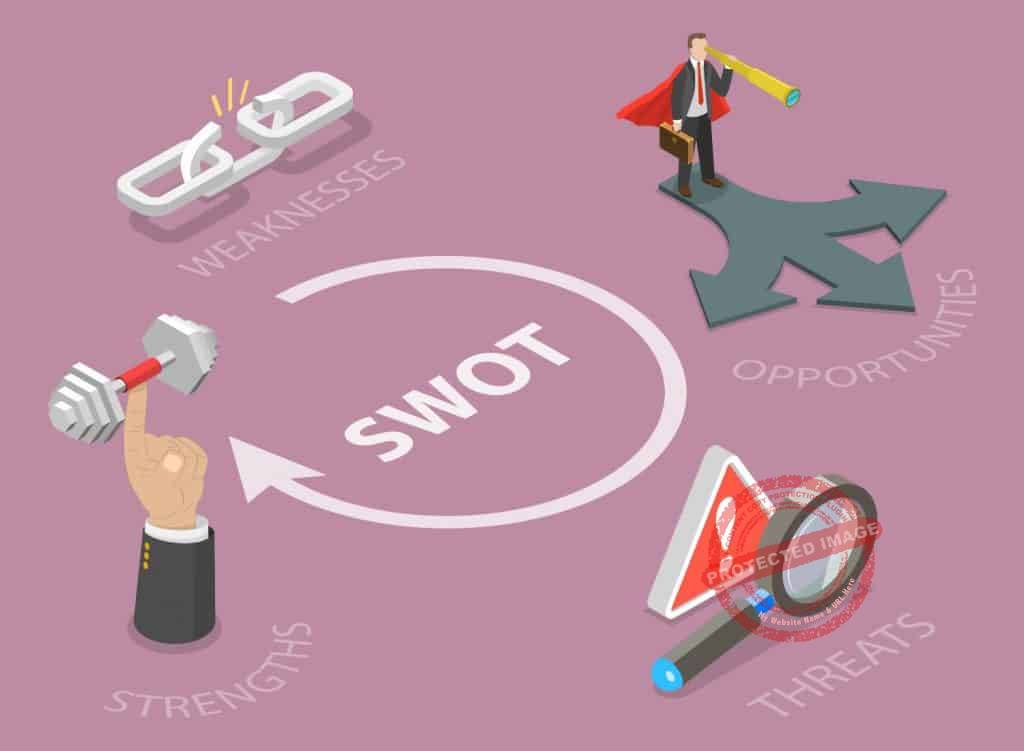
On the flip side, conducting a SWOT analysis comes with a setback.
Some people argue that it can do as much as discourage you from pursuing success at all.
Because it can make you realize weaknesses and threats, you may end up being afraid, doubting your own abilities, and losing your confidence.
Then again, a personal SWOT analysis is supposed to help you create a solid plan realistically.
It should reveal honest, unbiased information.
It should not be manipulated in any way to avoid providing you with the truth.

Besides, the information that an individual SWOT analysis gives away isn’t one-sided.
It is not intended to make you inferior and start questioning yourself.
Indeed, it is meant to draw out weaknesses and threats.
But you are supposed to build confidence and work on these negatives, instead of getting terrified.
Yes, realizing the negative aspects of yourself may be overwhelming.
But so is realizing their positive counterparts (strengths and opportunities).
The 4-Square Template For A Personal SWOT Analysis
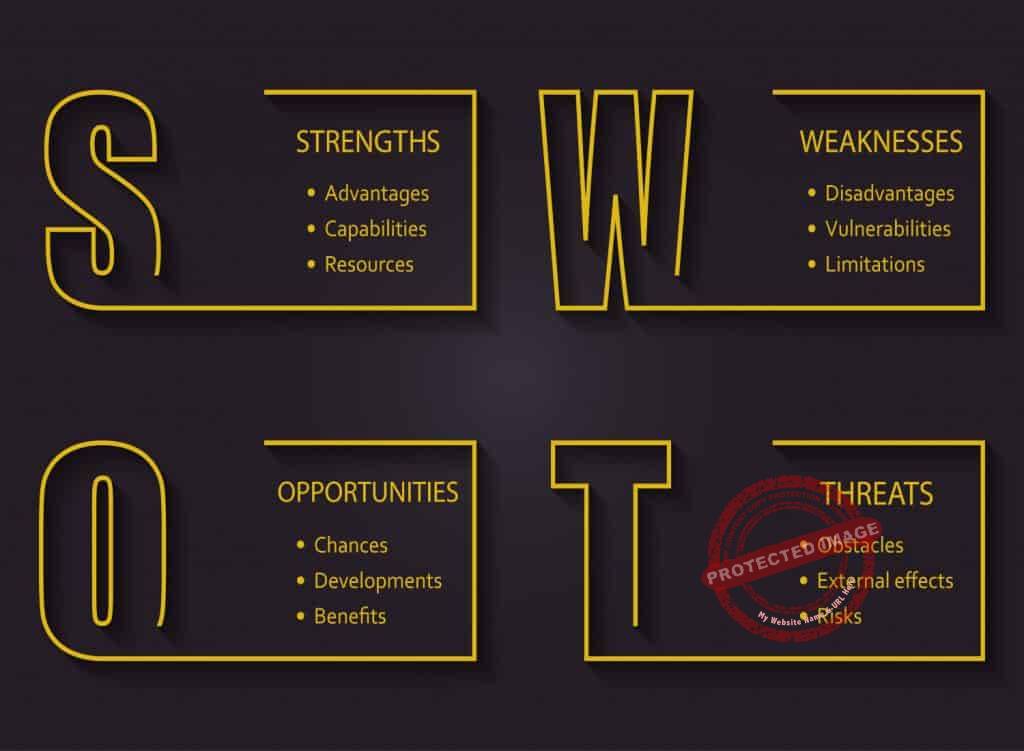
You may conduct a SWOT analysis of yourself in your preferred manner.
People worldwide tend to turn to different ways such as creating a basic bulleted list and making page-by-page reports of the key elements.
These methods have proven themselves effective.
What’s important is that you identify the four key elements of the method, which are strengths, weaknesses, opportunities, and threats.
So long as you can identify and then address these areas, you can get a desirable outcome.
On the other hand, you may also lean on a popular way of doing an analysis: use a four-square template.
This is because such a template helps organize information clearly and make results easily understandable, people typically peruse it when conducting the analysis.
To know how to complete a personal SWOT analysis, here’s a blank four-square template that will help you.
| STRENGTHS | WEAKNESSES |
| OPPORTUNITIES | THREATS |
To show you an example of a SWOT analysis of oneself here’s a filled four-square template.
| STRENGTHS | WEAKNESSES |
|
|
| OPPORTUNITIES | THREATS |
|
|
How To Carry Out A Personal SWOT Analysis
The Process

The correct way of conducting a SWOT analysis on yourself may seem difficult at first.
But you should make sure to do it correctly so you could maximize its impact on yourself.
Once you get the hang of conducting a SWOT analysis correctly, the process gets easier.
Follow these steps to do a SWOT analysis.
Step 1: Determine Your Strengths

These are internal, positive factors.
Don’t sell yourself short when answering the questions in this category.
More so, don’t think of it as bragging.
This area may require you to compare yourself to others.
Don’t hold back from having to put yourself above because you are supposed to determine what sets you apart.
Questions to ask;
- What are your talents, skills, and best abilities?
- What are your internal resources?
- Where did you attend school?
- And do you have any honorary awards from that school?
- What are your values that you don’t believe your peers have?
- What is your competitive advantage?
Step 2: Determine Your Weaknesses

These are internal, negative factors.
When answering the questions below, be honest.
Neither should you exaggerate certain points to make yourself look good nor should you deny them.
While it can be hard to accept them, you should identify everything that stunts your growth.
You need to know your weaknesses so you could eliminate them.
If possible, you need to turn them into strengths.
Questions to ask include;
- What is your personal roadblock to success?
- What are the internal resources that you should but may never have?
- Do you lack self-confidence and why?
- What areas do you need improvement on?
Step 3: Determine Opportunities

In an individual SWOT analysis, these are the external, positive factors describing your chances to succeed.
You should be able to name the factors that can help you fast-track to your goal.
Questions to ask;
- What are the external factors that benefit you?
- Do people consider you exemplary?
- In what area are you growing as a person?
- What are the market trends that are affecting you positively?
- Do you have social connections?
Step 4: Determine Threats
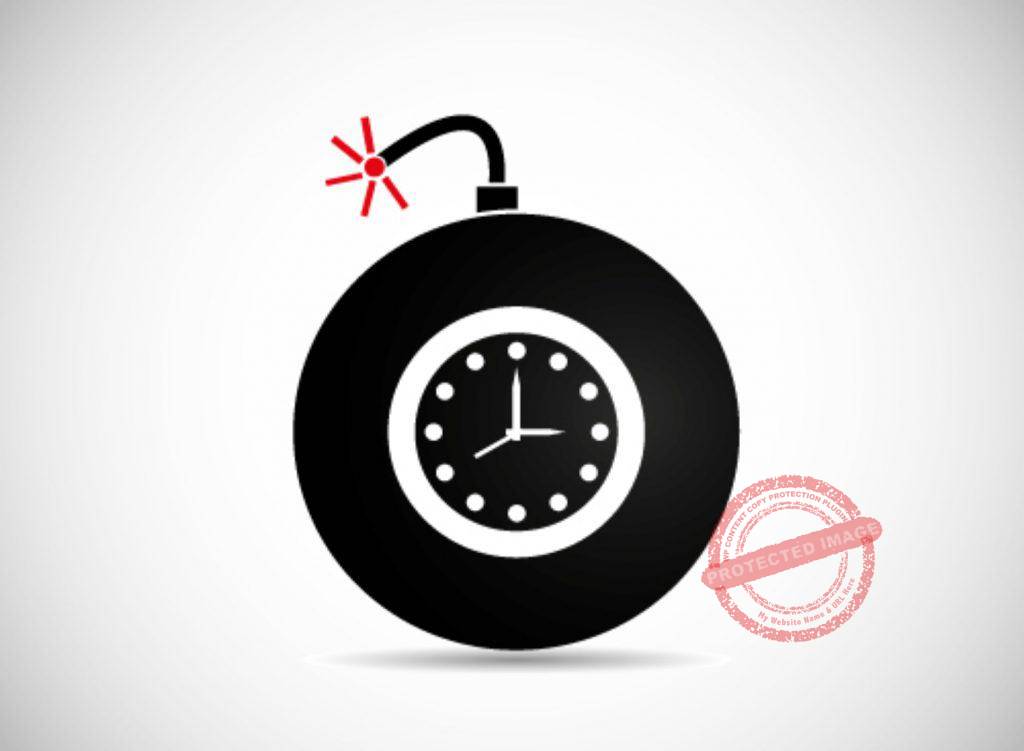
These are the external, negative factors in a SWOT analysis of a person describing the things that could negatively affect your chances of success.
Determining threats will help you picture “the worst-case scenario”.
If they happen, your best defense is your awareness.
Having a picture of any unwanted possibilities can help you prepare and eliminate them if possible.
If cutting them loose is not an option, identifying them is the first step towards building a sound contingency plan.
You could ask yourself the following questions;
- Who are your competitors?
- Do other people “naturally” dislike you?
- Are your colleagues considered as like-minded individuals?
- Do you have a great employer who helps you achieve success?
Step 5: Develop A Strategic Plan

The last step of the process on how to do a personal SWOT analysis is to respond proactively.
Once you’ve identified your strengths, weaknesses, opportunities, and threats, start developing a strategic plan.
Make it realistic and achievable.
Unless doable, avoid setting high standards.
There are two ways you can create a strategic plan.
1. Converting
- Convert weaknesses into strengths
- Convert threats into opportunities
2. Matching
- Match strengths and opportunities and approach these areas aggressively
- Match weaknesses and threats to know how you may remedy them
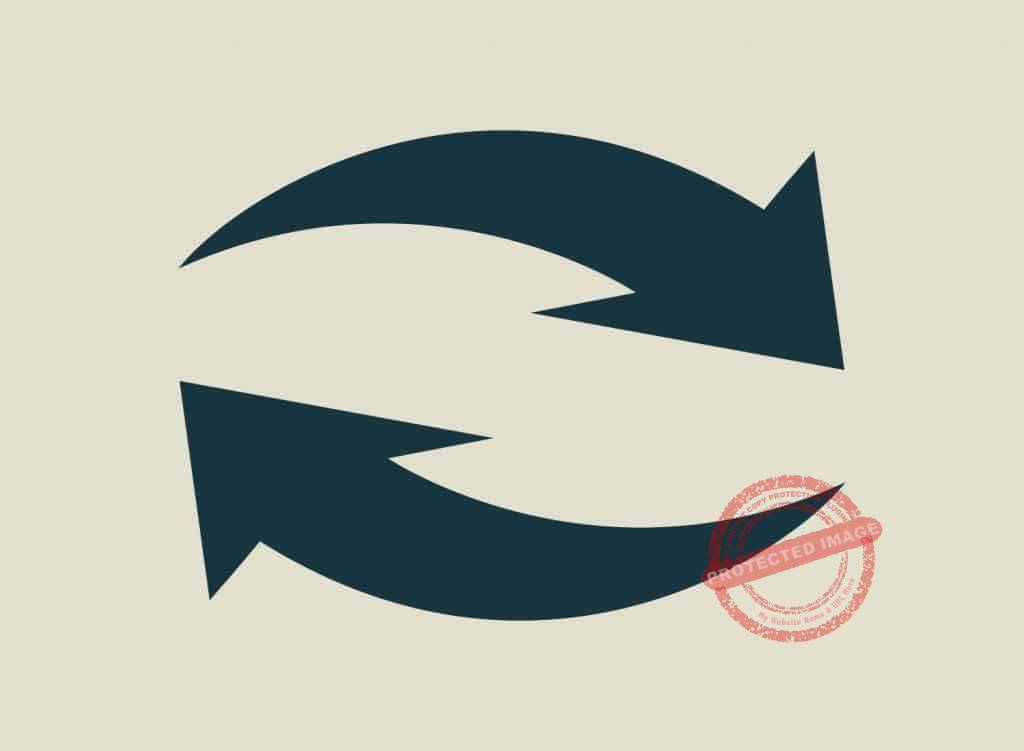
The idea of the first option is to convert negatives into positives.
For example, you may list your weakness as your introverted personality; especially while you’re in the field of professionals with outgoing personalities.
To convert this into a strength, you might consider ditching the field you’re in for one that doesn’t need you to be around professionals with outgoing personalities.
But a downside of this is its fixed solution.
While you might want to do so, you couldn’t always convert negatives into positives.
To use the same example above, it could be impractical to ditch a field you’re in, especially if you love your work, excel at it, and it rewards you financially.

If converting is not the best way to proceed, go with the matching approach.
With the matching approach, the solution is rather flexible.
You wouldn’t need to change anything at all.
You simply need to determine the appropriate points to match.
For example, you would be matching your persuasive personality (a strength) with the chance to convince an employer that he needs you in his company (an opportunity).
If you do this, there’s a high chance that you will get your way.
Your persuasive personality will help you successfully convince an employer that you’re an asset.
Choice Of Strategies

It’s up to you whether your plan involves short-term or long-term strategies.
The type of strategy is not as important as their usefulness to you.
If your goal is short-term (such as landing a high-paying job within 3 months), short-term strategies are recommended in such a case.
If regularly moving up the ranks until the end of your career is your goal, then what you need to develop is a long-term strategy.
Regardless of the type of strategies you want to develop, don’t deviate from the goal.
Developing strategies may be an important component of the process and of creating a plan.
But it is not your goal.

Your goal should focus on being able to maximize the results of the analysis.
Particularly, you need to leverage the positive factors drawn from your strengths and opportunities.
And you need to minimize the effects of any weaknesses and threats because these negative factors could keep you from success.
You may ask for help from a trustworthy peer such as your spouse, best friend, and/or parent.
And as you finish answering the questions, you may want to re-consult them for a review of your analysis.
Why Should You Do A Personal SWOT Analysis Regularly?
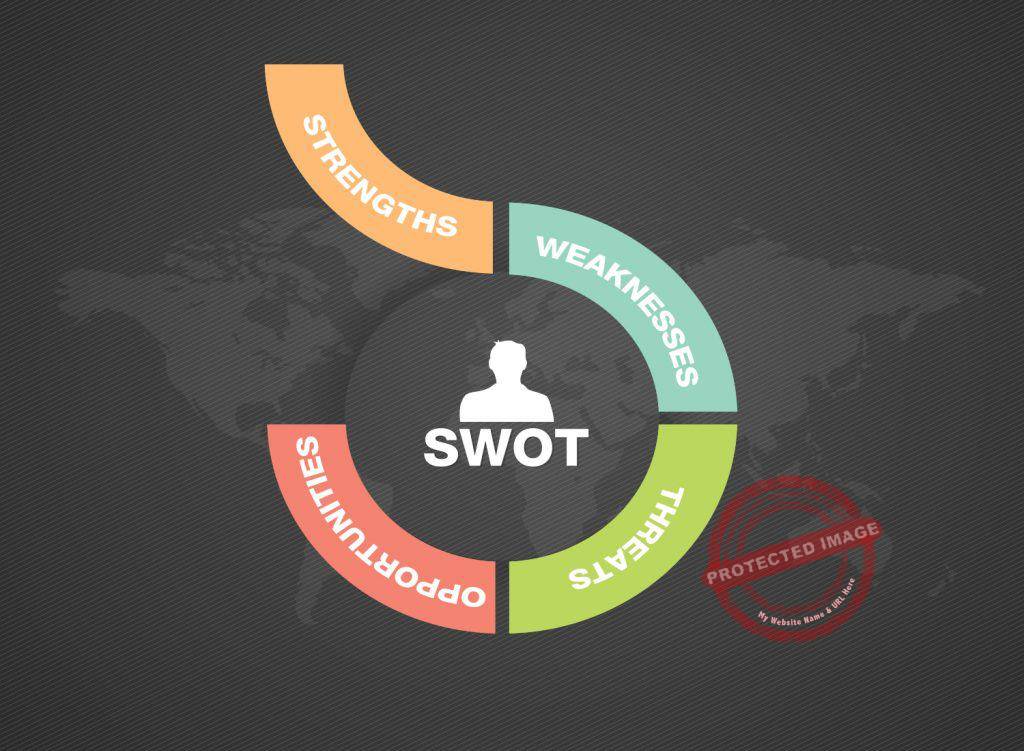
Because you already know how to carry out a personal SWOT analysis, you should consider doing the analysis at least once every year.
This way, you could take into account certain changes in your life and you review your current situation as you pursue a better place for yourself.
When you conduct a SWOT analysis on yourself, you will realize that you should be open to change.
This is because if your life is open to change, you shouldn’t fight any change.
These changes can affect you significantly.

Changes such as extra responsibilities in family life, the death of a peer, a disability, and loss of employment should be weighed in.
This is because these can make or break your path to your ultimate goal.
You need to factor them in. You might even have to adjust your goal.
Otherwise, you won’t be able to have the slightest control over their impact.
Conclusion On Personal SWOT Analysis
Conducting a SWOT analysis of oneself is very useful.
It is also free and doesn’t require a heavy time commitment.
In less than an hour, you could start and finish an analysis.
During the process, you will realize that the information you need to be your best version is already in your hands.
You just need to categorize and use them wisely.
Remember, the method is merely a starting point.
Based on all the information you could gather, it’s up to you to build a strategy and then follow through.
So long as you put in the necessary work, it can lead you nowhere else but to the top.
Click on Buy Now For a PDF Version of This Blog Post
 |
